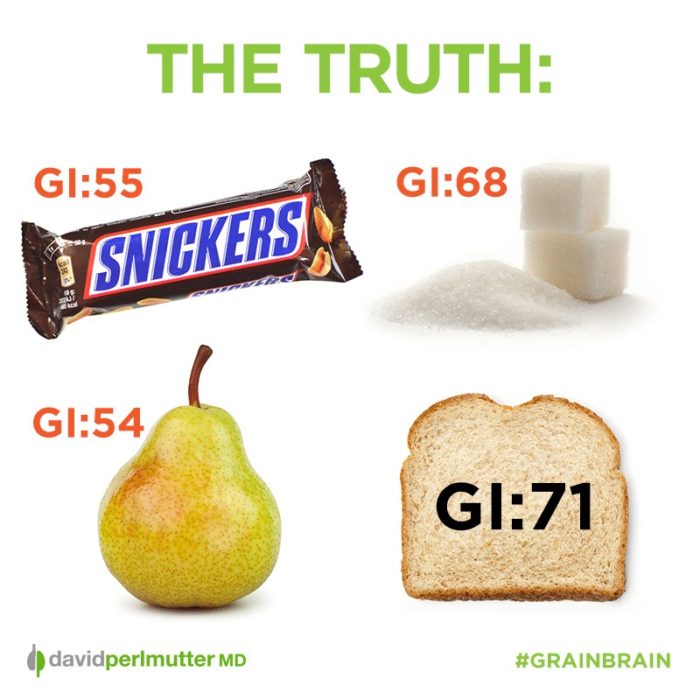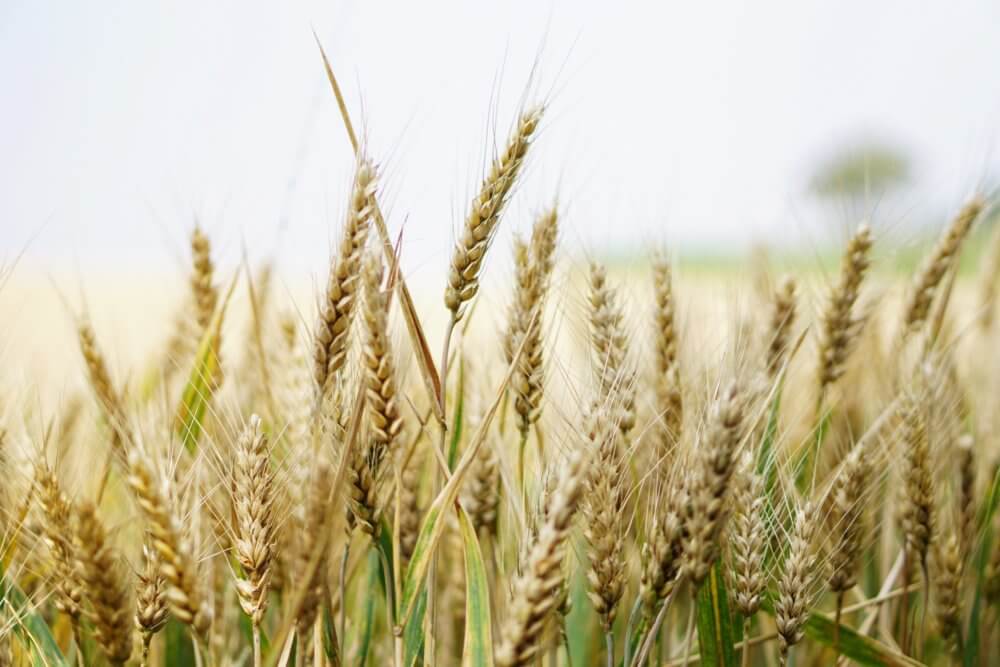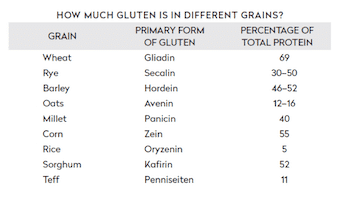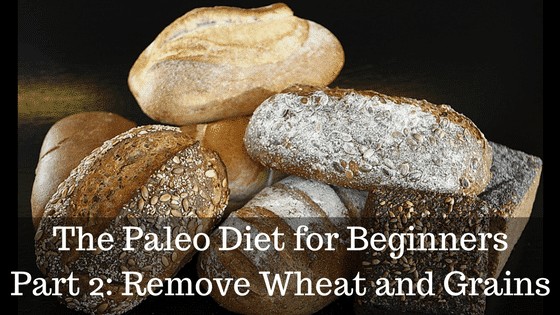I earn a small commission via affilate links at no extra cost to you.
If you want to know what are the paleo diet rules start with The Paleo Diet for Beginners Part 1. Once you’ve comfortably completed step one this is the next step. According to the official paleo diet rules, the paleo diet is a grain-free diet. I know this sounds like an impossible task because in America we eat everything on, in, wrapped, or with a side of grains. While many believe that gluten-free is sufficient you’ll also learn why that simply isn’t true. You might be panicked at the thought of adopting a grain-free diet. Maybe you worry about what you’ll have left to eat. When I was a paleo diet beginner I used to have those same fears. Now that I’ve eaten paleo for a couple of years I wonder what the big deal was. Sure, it will take some effort in the beginning to adopt a grain free diet. It will seem like a big deal because you’ll have to put thought into what you’re eating rather than relying on old habits. We live in a world of convenience foods and letting chemical companies cook for us has had devastating consequences on our health.
Paleo Diet For Beginners Step 4: Remove Wheat
Wheat is one of those ingredients that is no longer the stuff your great grandparents ate. In the 1950’s it was hybridized to produce more gluten, 400% more gluten than the original varieties. What does gluten do? The more gluten a wheat plant contains the greater its chance of surviving the winter. Elmer’s glue is made from gluten and food companies use gluten to make food chemicals stick together that normally wouldn’t on their own. Tasty!
Modern wheat raises your blood sugar more than table sugar does! If you have weight loss goals, metabolic syndrome, insulin resistance, type 2 diabetes, or gut health issues this is something you want to consider taking off the menu. You can read my previous articles about weight loss (6 simple steps) and (Why Diets Don’t Work).

Besides the sugar spike gluten works silently to damage your intestinal lining. In the presence of gluten, zonulin is released which causes the tight junctions of the small intestine to pull apart leading to leaky gut.
What is Leaky Gut?
Leaky gut is kind of like it sounds. Your small intestine is where 90% of nutrient absorption occurs so it’s technically supposed to leak the good stuff. Think of it like a screen door that allows a nice breeze to blow through. When you have leaky gut your screen door begins to get holes in it allowing insects in the house. In the body this is the equivalent of undigested food and fecal matter leaking into your system. Nutrients in the blood stream are beneficial, poo however isn’t. As you ignore the hole in the screen door, the small holes in your small intestine, they can become larger over time if ignored. Using the screen door analogy you go from a nice breeze -> insects -> squirrels -> raccoons in the house.
Why does leaky gut matter?
If you’ve been paying attention to the latest research gut health is the hot topic because they’re linking leaky gut and gut health to most of the problems that plague society. Since the research is so new they haven’t officially stated that all of the following things are caused by leaky gut; they’ve simply found that these diseases coexist with a leaky gut… A leaky gut isn’t normal and chronic disease is on the rise; something is out of place.
- Neurological problems:
- Autism
- ADHD
- Dementia
- Alzheimer’s
- Anxiety
- Depression
- Digestive problems:
- Food allergies and sensitivities
- Nutritional deficiencies
- Impaired nutrient absorption
- IBS
- Colitis
- Crohn’s Disease
- Gastric Ulcers
- Celiac Disease (Dr. Axe)

- Autoimmune diseases:
- Lupus
- Alopecia areata
Rheumatoid arthritis - Polymyalgia rheumatica
- Multiple sclerosis
- Fibromyalgia
- Chronic fatigue syndrome
- Sjogren’s syndrome
- Vitiligo
- Thyroiditis
- Vasculitis
- Crohn’s disease
- Ulcerative colitis
- Urticaria (hives),
- Type 1 diabetes
- Raynaud’s syndrome. (Dr. Jill)
- Metabolic issues:
- Type 2 diabetes
- Heart disease
- Fatty liver disease (Dr. Axe)
- Other:
- Acne
- Psoriasis
- Allergies
- Respiratory infections
- Arthritis
- Chronic fatigue
- Obesity
Paleo Diet For Beginners Step 5: Adopt A Grain Free Diet
The Problem With Whole Grains
For decades we’ve heard that we need to eat heart-healthy whole grains yet heart disease is still on the rise… Hmmm. Since whole grains contain their outer coating, the bran, they contain more phytates and lectins than their refined-grain counterparts. Gluten is the most popular lectin you’ve heard of. Lectins are found in all grains, beans, nuts, seeds, some vegetables, and grain-fed meat. This is why if you have gut health issues going gluten-free isn’t likely going to be enough to turn your health around. Phytates bind to minerals and prevent your body from absorbing them. In the paleo diet rules, it’s really very simple, food either makes you more healthy, or less healthy. If it doesn’t have the potential to make you healthier then it’s not paleo, that’s why paleo is a grain-free diet.
Phytates
Phytates are naturally occurring compounds in grains and legumes that are also called anti-nutrients. They bind to minerals and prevent your body from absorbing them. How many people do you know who take supplements for Iron, Calcium, Magnesium, and Zinc? These are some of the minerals bound by phytates. Selenium (important for thyroid health) and Manganese are other minerals bound by phytates. Phytates also reduce the digestibility of fats, proteins, and starches; essentially everything you eat. Does this mean you should buy white bread? Absolutely not. Although they do not contain as many phytates as their whole-grain counterparts they also don’t contain much nutrition; this is why most grain-based products are fortified. Phytates and lectins are two of the reasons the paleo diet rules eliminate grains and legumes. You’ll get better nutrition and all the fiber you need from vegetables.
Lectins
Lectins damage the lining of the intestines and are one of the components that lead to a leaky gut. Both grains and legumes contain lectins. When a person adopts a gluten-free diet they don’t remove all grains. The cells that line the intestine are designed to repair themselves to prevent leaky gut and lectins, even those found in gluten-free grains, hinder the reconstruction process. In the plant world, lectins help the seeds of a plant resist digestion so that they can be passed along in feces. It’s the perfect planting method from a plant’s perspective, seeds get deposited on the soil in their own heap of compost. To learn more about lectins and why the paleo diet rules eliminate grains, read this post with 12 Reasons To Adopt A Grain-Free Diet.
What If You Go Gluten Free?
There is no such thing as gluten-free; all grains have gluten proteins. Wheat, Rye, and Barley have taken center stage when it comes to gluten but did you know that on the list of grains Corn has nearly as much gluten (Zein) as Wheat? Even rice has a gluten protein, Oryzenin.

If you read my bio you already know that my paleo journey began with going gluten-free. I too was duped by marketing and the word on the street. When I read No Grain, No Pain by Dr. Peter Osborne last year is when I learned that there is no such thing as gluten-free. From a personal standpoint, I have known for years that grains always cause my joints to hurt, every time. As a health coach, I don’t know anyone who hasn’t felt better after adopting a grain-free diet. I sleep better, my thinking is clearer, I feel more peaceful, my hair doesn’t fall out, and my joints don’t hurt when I omit grains.
How to Minimize Lectins and Phytates?
Grains and legumes that have been soaked and sprouted and/or fermented have fewer phytates and lectins and they also have more nutrients. If you ever pick up a loaf of Ezekial, Squirrely, or Dave’s Killer Sprouted Bread and look at the nutrition label you’ll see all sorts of vitamins and minerals. When you look at the ingredient list you’ll see it isn’t because the nutrients have been added. Making a traditional sourdough has the same effect but it also takes days for the bread to properly ferment. While most of the coaches I know bend the paleo diet rules on occasion we do aim for “healthier” versions. Sprouted grains and traditionally made sourdough are at the top of the list if anyone is going to eat bread that isn’t grain free.
The Final Verdict on Grains
The best way to see how you feel on a grain-free diet is to simply eliminate all grains for a month. When you add them back individually you’ll see how they make you feel. If you have any health issues mentioned above that are associated with an insulin response you’ll likely want eliminate and/or definitely reduce your grain consumption. They’re a huge carbohydrate load with very few nutrients compared to vegetables. Metabolically speaking your body doesn’t care whether you eat a Snickers bar or bread because they both metabolize into glucose in the body.
If you suffer from any of the leaky gut symptoms mentioned above I’d avoid grains as a first step to going paleo. There are levels of paleo. Removing grains will help but some people are sensitive to more than just grains. The casein protein in dairy affects the small intestine in the same way that gluten does, so if you’re sensitive to one odds are that you’re sensitive to the other. If you have an autoimmune disease nightshades are the #1 group you are least likely to tolerate. Since this is an article for beginners and people who want to knock off 1 thing at a time let’s tackle the grains and wheat first.
For those without health issues, I’d still recommend removing and/or cutting back on the number of grains you consume. Try to opt for sprouted grain bread or fermented sourdough. Even better, look for non-hybridized versions of wheat. Einkorn is one of the original varieties of wheat so it contains much less gluten than the modern version. I can find it locally at Natural Grocers and Whole Foods but the link takes you to Amazon so that you know what the package looks like. For me personally, even if I have sprouted, fermented, and/or non hybridized grains I still have joint pain. So these things may work for you and they may not, it just depends.
Whatever you do always buy organic grains and legumes. Non-GMO project verified isn’t enough because grains and legumes aren’t genetically modified, but they can still be sprayed with glyphosate. Here is a .pdf showing which grain and legume crops are dried with glyphosate before harvest. This is how GMO free Cheerios tested positive for Round-up.
Originally posted on January 26, 2018 @ 11:37




1 thought on “The Paleo Diet for Beginners Part 2: Go Grain Free”
Comments are closed.